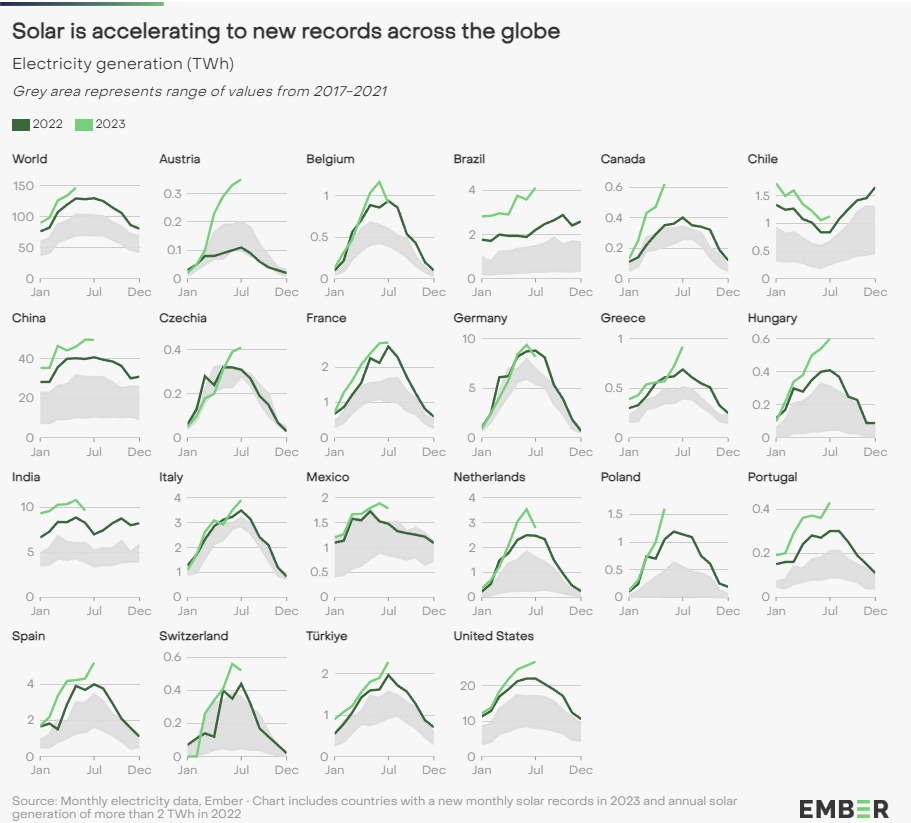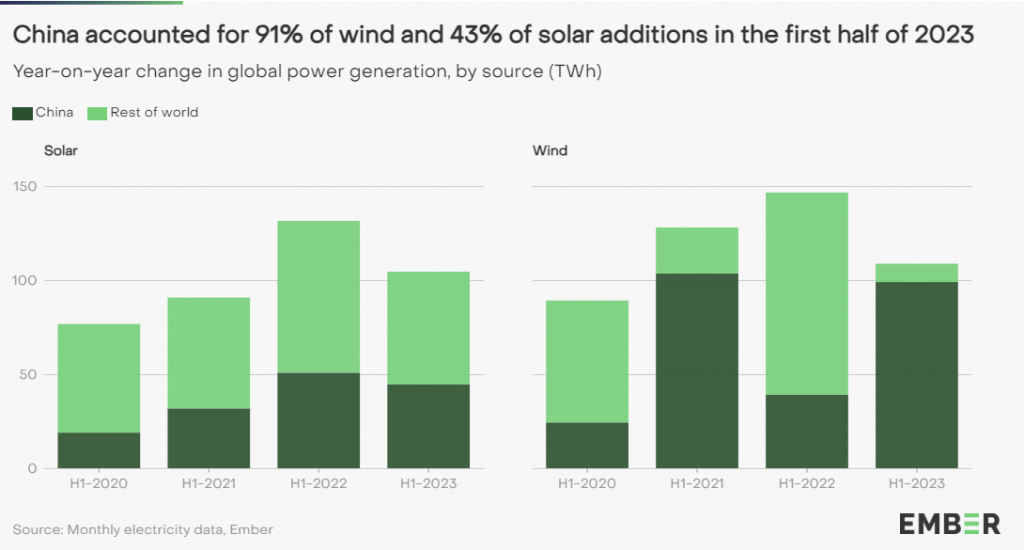In the first half of 2023, Greece was among the countries that had increased production of photovoltaic systems on a monthly basis. According to a report by Ember, although the growth of solar energy was not as fast as expected, 50 countries around the world recorded historically high levels of production in the first half of 2023.
At European Union level, 24 of the 27 Member States have improved their performance. For example, according to the most recent Ember report, the Netherlands increased in photovoltaic energy production, producing 3.5 TWh in June 2023 compared to 2.3 TWh on June 2022. Accordingly, Poland increased, producing 1.9 TWh in May 2023 compared to 1.2 TWh on May 2022. Similar increases were observed in other parts of the world, such as Asia (including India and China), the United States of America and Latin American countries.

It is noted that globally, China continued to lead in the addition of new wind and photovoltaic projects in the first half of 2023, as shown in the slide below from the report.
Specifically, China accounted for 91% of global growth in wind energy and 43% in photovoltaic energy in the first half of the year. The next place is followed by the European Union and India, each holding about 12% of the global share in the development of these energy sources.

Overall, both wind turbines and photovoltaic systems were the two dominant energy sources that significantly increased their share of the global energy mix in the first half of 2023. In total, wind and photovoltaic systems accounted for 14.3% of world electricity production, or 1,930 TWh, an increase of 1.5% over the corresponding period of the previous year. In the first half of 2023, 5.5% of the world’s electricity came from photovoltaic and 8.8% from wind.










